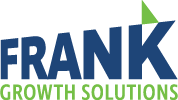What does your board need to know?
Non-profit board members need smarts and a willingness to work hard. Their blood, sweat and (yes, sometimes) tears are what keeps your organization moving forward. But they can’t point things in the right direction without understanding heaps of information about the organization they’re leading.
For long-time board members, this info can sometimes feel like second nature, but when someone new joins the organization it’s hard to remember everything they need to learn.
I’ve yet to meet a volunteer who’s excited about the idea of digesting “heaps” of new info. But you can make the process a lot more manageable for everyone involved by breaking it down. The best way to make sure new board members have everything they need is by building an information and knowledge transfer checklist:
1. Organizational mission, values and history
What are the distinguishing features of your organization? Why do you do what you do? Make sure your board members understand where the organization is coming from as well as where it’s headed.
2. Strategic priorities and plans
Does your organization have a current strategic plan? What are your goals and current challenges? Include any industry trends, environmental scans, and the public policy environment they’ll be stepping into.
3. Board responsibilities
This is more than “attending meetings.” Include legal, fundraising, ethical and advocacy responsibilities and any requirements associated with your organization’s charitable status.
4. Summary of programs and services
What does your organization do in the larger community? Be sure to include how your organization measures and evaluates success for each initiative.
5. The board’s role in the organization
What type of board are they stepping into? Include decision-making procedures, board culture, and communication practices both with other board members and your organization’s staff.
6. Overview of key stakeholders
Who do your board members need to know? Include organization members, funders, key government figures, sister service providers and competitors. What is the existing relationship with each?
7. ED and staff roles
An overview of all employees of your organization and your HR practices.
8. Revenues and expenses
Dig into the money. Be sure to include reserves, fundraising costs, financial management and the board role in budgeting processes. The goal isn’t to turn them into a treasurer (unless they are one, of course) but to give them a high-level understanding of the organization’s financials.
9. By-laws and other policies
Run through your organization’s operations manual. What policies does your board member need to know about? Review board practices, rules and procedures.
You don’t have to have one person run through each item on the checklist or do them all in one day. Assign each item, and keep track of the date it gets completed. By the time you reach step 9, your new board member will be prepped and ready to direct their energy towards helping your organization thrive.



